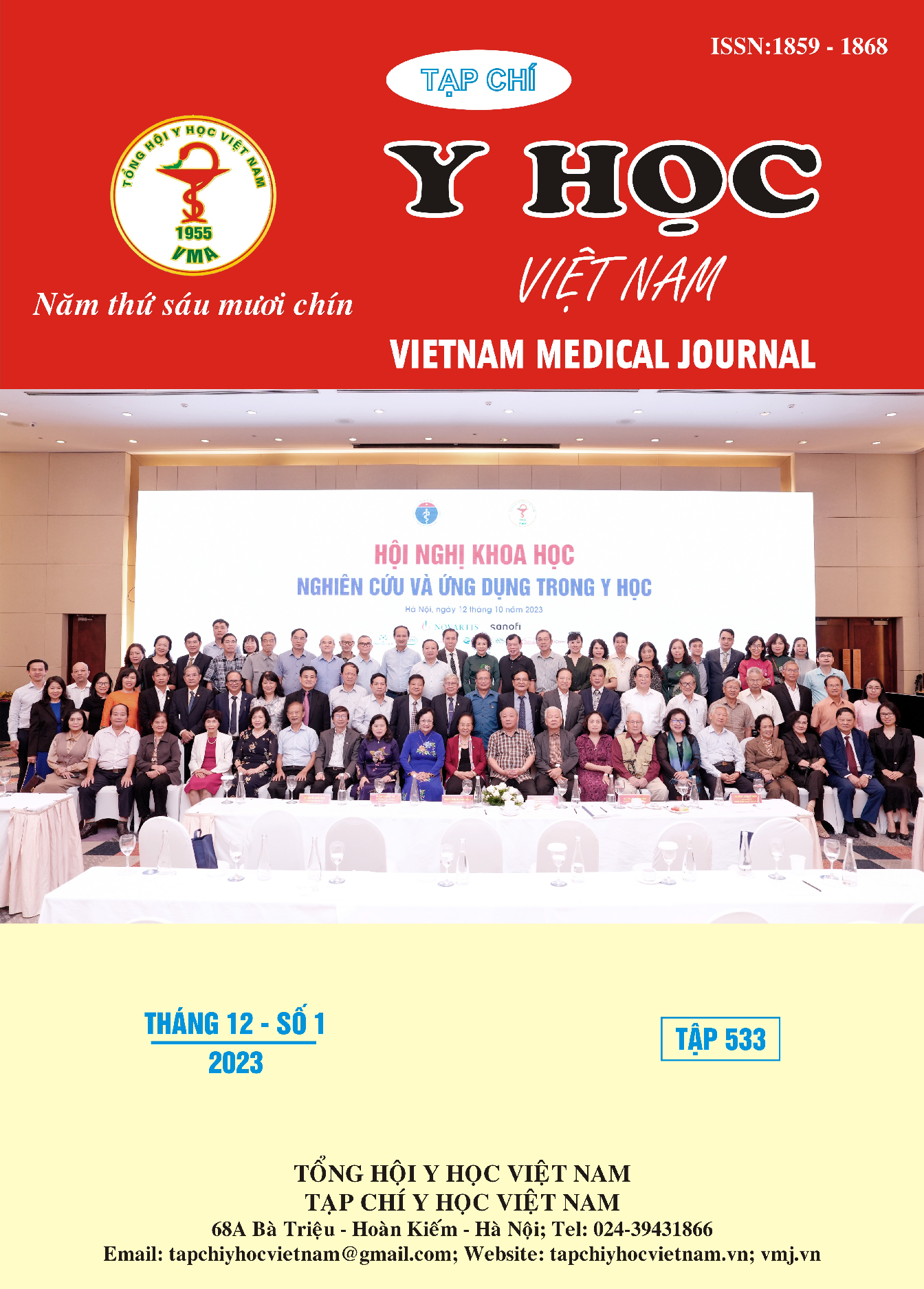SOME FACTORS RELATED TO FALL IN POSTMENOPAUSAL OSTEOPOROTIC WOMEN
Main Article Content
Abstract
Osteoporosis and falls are both common problems in the elderly. The rate of falls in postmenopausal osteoporosis patients according to our study is 38.3%, the rate of falls in the last 1 year is 26.1%. Assessing the risk of falls and osteoporosis in postmenopausal patients is one of the indicators related to patient safety. Objective: Evaluate some risk factors related to falls in postmenopausal osteoporotic women visiting Bach Mai Hospital and Hanoi Medical University Hospital. Subjects and methods: Cross-sectional descriptive study with analysis of 115 postmenopausal female osteoporosis patients examined and treated at Bach Mai Hospital and Hanoi Medical University Hospital from April 2023 to September 2023, diagnosed with osteoporosis based on the criteria of the American Endocrine Society 2020 (AACE 2020). Results: Patients with a BMI greater than 23, severe osteoporosis, had reduced daily functional activities, were at risk of falling, had a higher fall rate than the other group, the difference was statistically significant. Statistics, with p<0.05. The difference in the rate of falls between different age groups, different living situations and groups with fear of falling is not statistically significant, with p>0.05. Conclusion: Some common fall risks in postmenopausal osteoporosis patients include: patients with obesity, severe osteoporosis, groups at risk of falling, and reduced daily functional activities.
Article Details
References
2. Organization WH, Ageing WHO, Unit LC. WHO global report on falls prevention in older age. World Health Organization 2008.
3. Burns E, Kakara R. Deaths from Falls Among Persons Aged ≥65 Years - United States, 2007-2016. MMWR Morb Mortal Wkly Rep 2018;67:509–14. doi:10.15585/mmwr.mm6718a1
4. Tseng LA, El Khoudary SR, Young EA, et al. The association of menopause status with physical function: the Study of Women’s Health Across the Nation. Menopause 2012;19:1186–92. doi:10.1097/gme.0b013e3182565740
5. Sowers M, Tomey K, Jannausch M, et al. Physical functioning and menopause states. Obstet Gynecol 2007;110:1290–6. doi:10.1097/ 01.AOG.0000290693.78106.9a
6. Ersoy Y, MacWalter RS, Durmus B, et al. Predictive Effects of Different Clinical Balance Measures and the Fear of Falling on Falls in Postmenopausal Women Aged 50 Years and Over. GER 2009;55:660–5. doi:10.1159/000235652
7. Barrett-Connor E, Weiss TW, McHorney CA, et al. Predictors of falls among postmenopausal women: results from the National Osteoporosis Risk Assessment (NORA). Osteoporos Int 2009;20:715–22. doi:10.1007/s00198-008-0748-2
8. Ensrud KE, Ewing SK, Taylor BC, et al. Frailty and risk of falls, fracture, and mortality in older women: the study of osteoporotic fractures. J Gerontol A Biol Sci Med Sci 2007;62:744–51. doi:10.1093/gerona/62.7.744
9. Chu L-W, Chiu AYY, Chi I. Impact of falls on the balance, gait, and activities of daily living functioning in community-dwelling Chinese older adults. J Gerontol A Biol Sci Med Sci 2006;61:399–404. doi:10.1093/gerona/61.4.399
10. Kitcharanant N, Vanitcharoenkul E, Unnanuntana A. Validity and reliability of the self-rated fall risk questionnaire in older adults with osteoporosis. BMC Musculoskelet Disord 2020;21:757. doi:10.1186/s12891-020-03788-z


